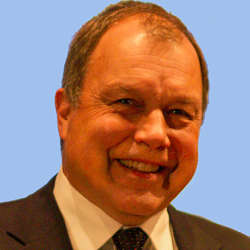Mineral Extraction from the Mineral Microbiome
A special issue of Minerals (ISSN 2075-163X). This special issue belongs to the section "Mineral Processing and Extractive Metallurgy".
Deadline for manuscript submissions: closed (1 June 2019) | Viewed by 3389
Special Issue Editors
Interests: applications of biotechnology to mineral extraction; mineral microbiome; business models in mining
Special Issues, Collections and Topics in MDPI journals
Interests: biotechnology applications in mining, mineral processing, metallurgy, and remediation
Special Issue Information
Dear Colleagues,
All minerals used by humans have been taken from the Earth’s crust using methods fundamentally unchanged over millennia. Rocks are found that contain high concentrations of metals and broken open, the ore minerals are concentrated, the metals are extracted from the ores and then purified. While more effective machines, explosives, and chemicals have been steadily developed since the industrial revolution, the use of biotechnology in mining has been restricted to variations of the bioleaching occurring naturally in leach pits for hundreds of years. Biotechnology is a relative newcomer to mining compared to technologies born of innovations in the physical and chemical sciences that are well established with proven low risk thresholds. Consider, though, that the genetic code of life was discovered in 1953. Six and a half decades later, pocket size DNA sequencers are available for $1000 and microbial gene editing is a commercial service. With these new tools, the mineral microbiome can be explored for novel biological structures and systems that have evolved to interact with specific minerals and metal ions. The result will be a much deeper understanding of the mineral microbiome, one that could lead to paradigm-changing methods of mineral extraction. The dissemination of these possibilities is the motivation for this Special Issue.
Prof. Scott Dunbar
Mr. Robert Greene
Guest Editors
Manuscript Submission Information
Manuscripts should be submitted online at www.mdpi.com by registering and logging in to this website. Once you are registered, click here to go to the submission form. Manuscripts can be submitted until the deadline. All submissions that pass pre-check are peer-reviewed. Accepted papers will be published continuously in the journal (as soon as accepted) and will be listed together on the special issue website. Research articles, review articles as well as short communications are invited. For planned papers, a title and short abstract (about 100 words) can be sent to the Editorial Office for announcement on this website.
Submitted manuscripts should not have been published previously, nor be under consideration for publication elsewhere (except conference proceedings papers). All manuscripts are thoroughly refereed through a single-blind peer-review process. A guide for authors and other relevant information for submission of manuscripts is available on the Instructions for Authors page. Minerals is an international peer-reviewed open access monthly journal published by MDPI.
Please visit the Instructions for Authors page before submitting a manuscript. The Article Processing Charge (APC) for publication in this open access journal is 2400 CHF (Swiss Francs). Submitted papers should be well formatted and use good English. Authors may use MDPI's English editing service prior to publication or during author revisions.
Keywords
- mineral processing
- hydrometallurgy
- remediation
- molecular biology
- mineral microbiome
- microbial metabolism
- adsorption/absorption
- genetic engineering
- synthetic biology






